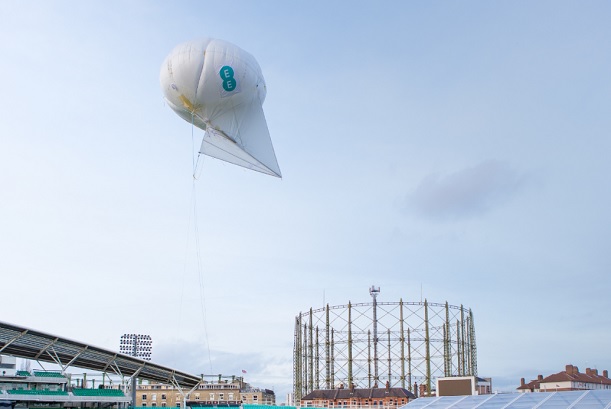EE has demonstrated the use of drone and balloon-based mobile sites to boost 4G mobile coverage.
At an event at the Oval cricket ground in London, small cells were attached to a helium balloon to provide a wide area LTE network. EE said that the balloons could provide coverage where permanent sites have been damaged or in areas not reached by 4G.
The BT-owned mobile operator also demonstrated drones equipped with small cells that could be used to deliver targeted connectivity. These are designed for use in applications such as search and rescue operations, EE said.
The solutions, termed ‘air masts’ by EE, are currently in patent-pending status. However, the operator said that it plans to deploy a balloon solution in a rural environment in 2017.
EE also unveiled its Rapid Response Vehicles, which will support the new LTE-powered Emergency Services Network (ESN). The vehicles will be used to quickly provide coverage during local site outages and essential maintenance.
The moves are part of a wider effort by EE to improve its coverage.
In November 2016, EE switched on its 800MHz spectrum holding in the UK in order to cover 5000 square km of LTE not-spots. The operator called on rivals and regulators to begin giving coverage figures based on geographical terms.
This followed EE in April 2016 announcing plans to offer LTE coverage to 95 percent of the UK’s landmass by 2020, describing the population metric as “outdated”.
EE CEO Marc Allera said: “Innovation is essential for us to go further than we’ve ever gone, and deliver a network that’s more reliable than ever before. Rural parts of the UK provide more challenges to mobile coverage than anywhere else, so we have to work harder there – developing these technologies will ultimately help our customers, even in the most hard to reach areas.
“Looking ahead, I see innovations like this revolutionising the way people connect. In the future, why couldn’t we offer what we’re calling ‘coverage on demand’? What if an event organiser could request a temporary EE capacity increase in a rural area, or a climber going up Ben Nevis could order an EE aerial coverage solution to follow them as they climb?
“We need to innovate and we need to think differently, always using customers’ needs to drive the way we create new technologies.”
Read more: EE downplays fears over UK’s new emergency services network


